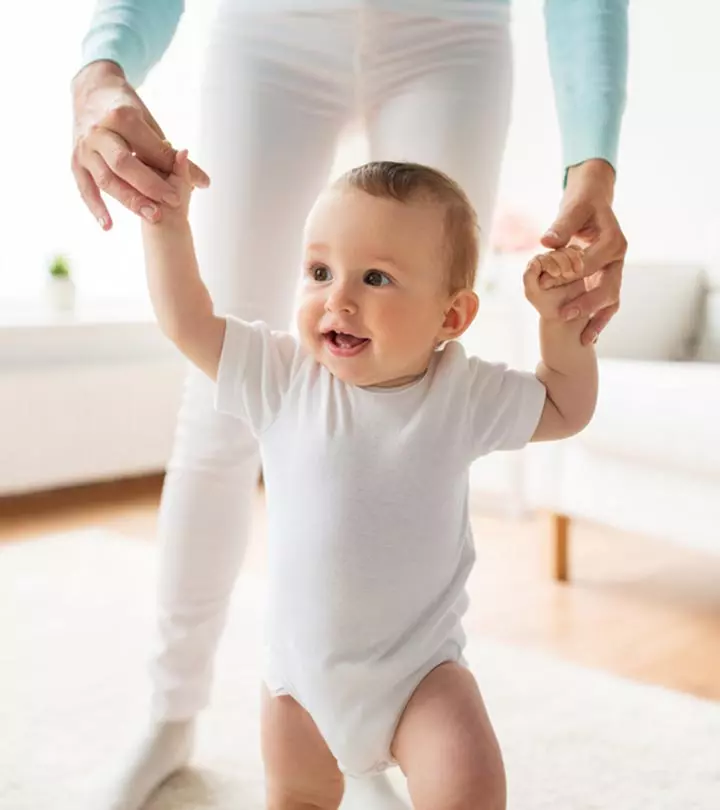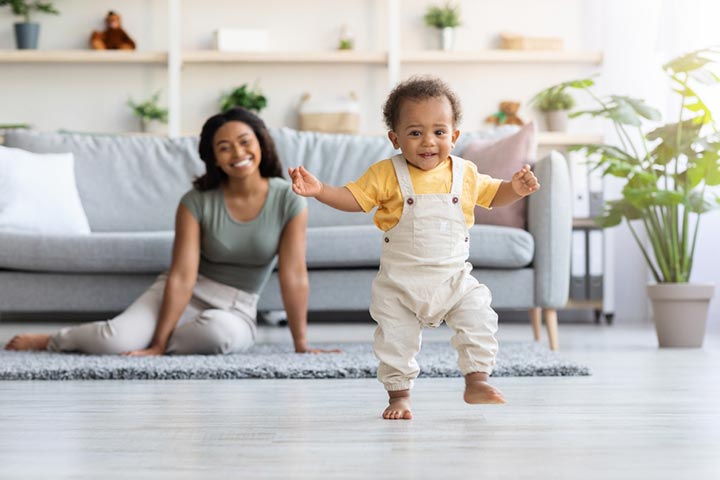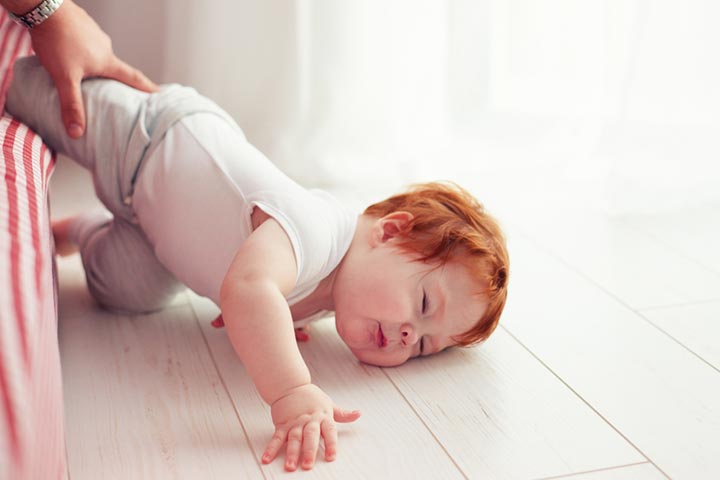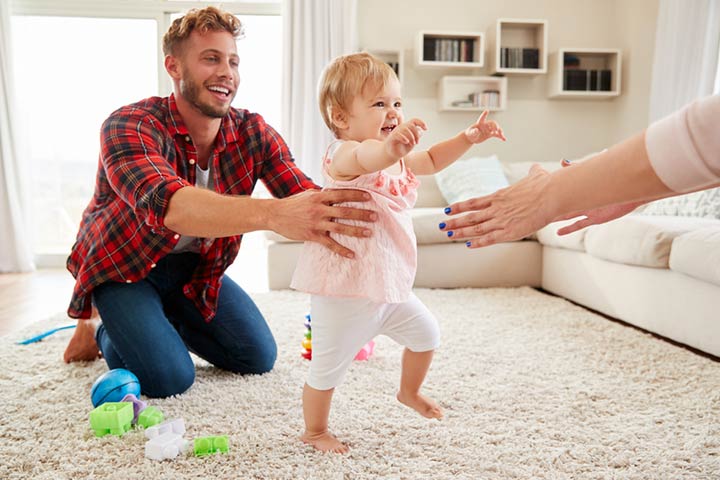
Image: Shutterstock
Seeing your little one running around the house is a great feeling as a parent. All the parents eagerly wait for their babies to start walking, as it’s a sign of healthy development. However, like the first words, walking is different for different kids. Babies follow different stages until they become ready to stand up independently.
In this article, we’ll take you through the beautiful journey of your babies’ first step and answer your questions about their walking alongside.
When Do Babies Start Walking
Babies often begin walking between 9 and 18 months(1). But remember that every baby is unique and develops milestones at its rate, so try not to worry about when newborns walk or how to train a baby to walk. It is crucial to wait until your child reaches that age before rushing or pressuring them into walking. If your child does not begin to walk by 18 months, you might want to talk to their pediatrician.
All in all, babies only start walking independently when they are ready. So now, let’s look at the different stages a baby goes through until they reach their free walking.
Stages Of Baby Walking
- Rolling
When your infant begins to roll over, the foundation for walking is set. Babies start to roll over between 4 and 7 months(2). At this moment, you must exercise extreme caution and keep a close eye on your child since they may first need some assistance rolling back from the belly to the back.
- Sitting
Unsupported sitting is then followed by supported sitting. To prevent your child from rolling from their back to their stomach or vice versa and from holding their head on their own, please refrain from letting them sit independently.
- Crawling
Your baby will crawl between 7 and 10 months (3). They start to move toward objects they wish to touch, feel, ingest, or otherwise investigate as they become more independent and explore their surroundings.
- Standing
As soon as your child begins to crawl, they will start grabbing onto furniture or other nearby objects so they can support themselves while standing.
- Holding Hands
This is the best way to teach them to take a few steps with assurance and without concern about falling. Hold onto their hands and steadily assist them as they take just a few steps at a time.
- Cruising
The baby walking age has finally arrived for cruising! Your baby will begin roaming the home, holding furniture and anything else within reach, after developing confidence by using your hands to support their steps. Babies enjoy this phase, and ultimately they begin to take one or two unaided steps.
- Walking
The stage is finally set! It’s time for your little one to walk, run, occasionally trip, and then walk again.
Regarding falls, let’s look at the best environment to help your baby avoid falling or increasing the chances of getting injured.
Best Surroundings To Practise Walking
It is crucial to provide a secure environment for your little one to learn to walk while also giving you peace of mind. To maintain a safe environment, it is vital to keep the following in mind:
- First, ensure none of the area’s furniture has sharp edges.
- Install baby gates in the kitchen and any stairways your child can use.
- Lock any drawers, cabinets, or furniture that could fall over if your child pulled them to stand up.
Let us find ways to encourage your babies to improve their chances of walking fast.
Help Your Baby To Walk With These Tips
Although a baby will learn to walk naturally without any practice, if your baby isn’t able to develop this skill, then you can try the following ways to help them learn to walk effectively.
- Push Toy – Medical professionals and experts advise against using standard baby strollers and baby walking devices. However, a push toy like a wagon or a push car aids in developing a baby’s leg muscles and assists in practicing and mastering walking.
- Encourage And Console Mistakes: Beforeyour baby learns how to walk correctly, they will fall 100 times. Your baby will experience anxiety if you get discouraged or anxious. Instead, salute their effort and allow them to see your joy despite it. Every time they fail, give them lots of kisses and cuddles to provide them with the courage to try again.
- Make Hurdles– Who doesn’t enjoy a challenge? Motivate your infant to take two steps for every take by placing yourself or the object they are trying to grab two steps away. These could be activities that encourage an infant to walk. In addition, a little one can be motivated by a sense of accomplishment as an adult!
- Be A Helping Hand– They can be most motivated by your arms, contact, and hug. So, while they are starting to walk, reach out a hand to them to support them.
Many parents eagerly anticipate their baby’s first steps, and it is fascinating to see their baby take its first steps. Be patient, though, and try not to stress out too much over the timing. Instead, inform a healthcare professional if your baby hasn’t taken any steps by the time they are 15 months old. Happy parenting!
















